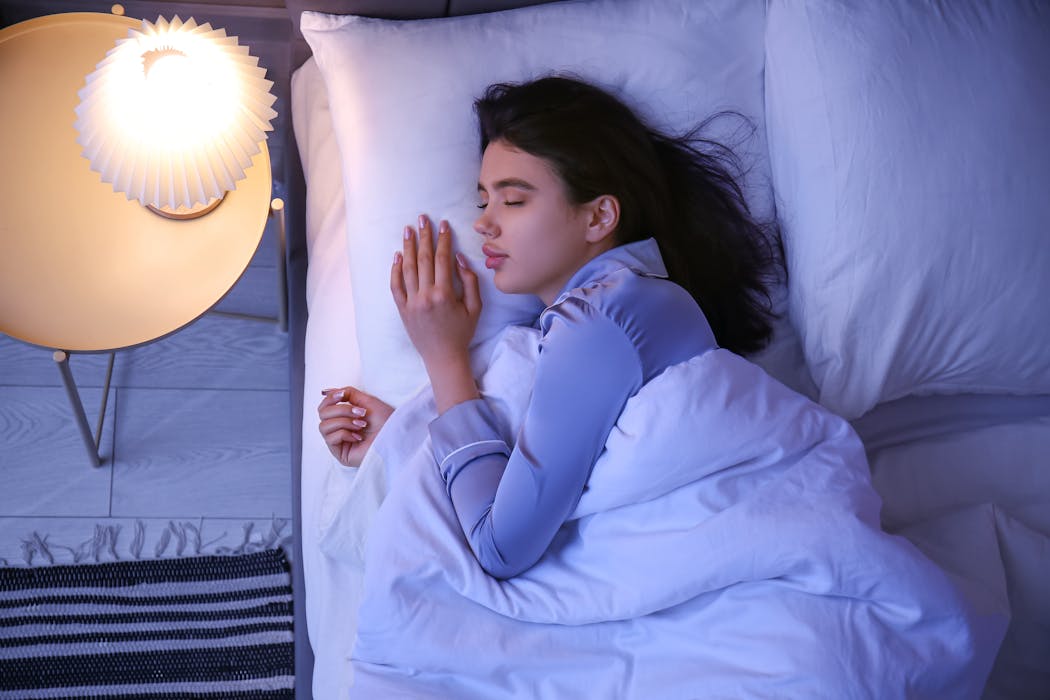
Sleep is one of the essential physiological needs for human survival, alongside food, water and air. But sleep is socially driven, influenced by environmental and personal factors, and a recent study suggests it may be affected by fragments from bacteria.
Historically scientists have thought it unlikely that gut microbes affect physiological sleep regulation. The recent study, published in Frontiers in Neuroscience, indicated bacterial cell wall components (peptidoglycan) have been found in areas of the brain called the brainstem, olfactory bulb and hypothalamus.
Read more: Preserving barramundi, and the barra and chips
Peptidoglycan, also known as murein in scientific lore, is a strong, mesh-like layer outside the plasma membrane of most bacterial cells. This helps contain the bacteria’s shape and rigidity. Without peptidoglycan, bacteria would just be little water balloons.
The recent study suggested that concentration of peptidoglycan seems to increase in periods of sleep deprivation, or changes in sleeping patterns. This is a sign that the gut microbiota might play a role in sleep quality.
This work was carried out on nine male mice which were housed in a 12-hour light/dark cycle. Measurements were taken over 48 hours to map brain activity cycles during sleep and rest. Afterwards the mice were euthanised. Different areas of the brain were separated immediately so isolated areas could be measured independently for peptidoglycan levels.
The research has been conducted and designed in a rigorous fashion. But the study exclusively used adult male mice. Although animal models can be translated to humans, the crossover in microbiota research is weak. Animal research into microbiota can only tell us so much about what is happening in our guts because the environment in which humans and mice live is vastly different.
For example, a breakthrough paper in 2006 raised mice without any microorganisms in their bodies, known as germ-free mice, and then transplanted some of them with the gut microbiota from obese mice. The study found the mice who had the gut microbiota transplant gained more body fat than germ free mice colonised with microbiota from lean mice. This breakthrough research suggested that the gut microbiota might contribute to weight gain and a knock-on effect obesity.
But follow up studies using humans fecal microbiota transplantation from lean humans into obese adolescents did not lead to weight loss. Findings in mice can suggest mechanisms but not necessarily predict outcomes in humans.
Furthermore the recent sleep research on mice has ignored the other 49% of the population, females. It’s a gap that risks leaving half the world in the dark about sleep health.
So when it comes to understanding the gut microbiota, does it really matter what organisms are found in the gastrointestinal tract of rodents and how this might interfere with their sleep patterns?
Our brain is traditionally considered sterile and protected by the blood brain barrier. This tight system blocks microbes and molecules from entering the brain in healthy people. There is no evidence to suggest that there is a brain microbiome unlike within the digestive system and on our skin.
However, previous studies have shown fragments that relate to bacteria such as peptidoglycan and lipopolysaccharides can be detected within the brain. This is probably because the fragments are smaller than bacteria. The blood brain barrier and intestinal wall are more permeable in conditions like sleep deprivation, inflammation, ageing or even after strenuous exercise.

Day-to-day variations in the cells that make up the wall of your intestines may be affected due to the direct effects of circadian regulation on the junctions between the cell membrane and its other compartments. These junctions form a seal that prevents the passage of molecules and ions between cells, essentially controlling what passes through.
When these junctions relax, this allows the organisms found in the GI tract to enter the blood, which are then transported around the body. It’s unclear whether that is good or bad but leaky junctions have been associated with inflammatory bowel disease.
Some research suggests that our microbiota is closely linked through the gut-brain axis. Although large amounts of research on the gut-brain axis have been conducted on rats and mice, there are very few translational links between what has been researched in animals and what actually happens in the human body.
This means researchers would need to make a massive investment in researching how the gut microbiome interacts with our organs and other physiological systems with large-scale human interventions.
Since there is still much we do not understand about the gut microbiome, we are a long way off this kind of scientific insight. However, this study does reflect growing scientific and public interest in the intersection between human microbiology and neuroscience. It may be that we are only beginning to appreciate just how interconnected the human body and everything in it is.
This article is republished from The Conversation, a nonprofit, independent news organization bringing you facts and trustworthy analysis to help you make sense of our complex world. It was written by: Lewis Mattin, University of Westminster
Read more:
- Five pieces of sleep advice that could be making your insomnia worse – a sleep therapist explains
- Humans evolved to share beds – how your sleeping companions may affect you now
- Your dog may be wilder than you think, according to canine sleep research
Lewis Mattin is affiliated with The Physiological Society, The Society for Endocrinology, In2Science & UKRI funded Ageing and Nutrient Sensing Network.


 The Conversation
The Conversation
 AlterNet
AlterNet America News
America News Raw Story
Raw Story Nola Entertainment
Nola Entertainment Daily Voice
Daily Voice Lubbock Avalanche-Journal
Lubbock Avalanche-Journal Mediaite
Mediaite